2019 annual report
Kelowna, British Columbia, Canada
For the year ended December 31, 2019



For the year ended December 31, 2019


On behalf of Council, I am pleased to present the City of Kelowna 2019 Annual Report. While we know that the coming year, and even years, will bring new and significant change in part due to the COVID-19 global pandemic, reflecting on the work and decisions made in the last year, I see a solid foundation and plans that will lift Kelowna above current challenges and seize the opportunities ahead of us – shaping Kelowna for the future.
Kelowna is a thriving city and an incredible place to call home. To flourish in the future, we need to be agile, resilient and unafraid to do things differently. Through the Imagine Kelowna process, we heard loud and clear from the community that as we grow, we need to look out for one another and protect the stunning environment that sustains us. Our vision for an inclusive, welcoming, prosperous and sustainable future calls upon us all to be ambitious and embrace the challenges ahead. To help get us there, we have committed to deliver on Council’s Priorities 2019 - 2022. As Council, we will focus decisions and provide direction to staff for measurable results in six areas: community safety, social and inclusive, transportation and mobility, vibrant neighbourhoods, economic resiliency (which given our current crisis, is more important than ever) and environmental protection.
Kelowna is an inclusive community for all. Over the last few years as we witnessed housing challenges, the opioid crisis and socio-economic barriers at the local, national and global level, we have stepped up to support people experiencing homelessness through collaboration and by broadening our role as a municipality to address homelessness. We continue to support the community-developed Journey Home Strategy endorsed by Council in 2018. As part of our commitment to the Strategy, we’ve approved the addition of more than 230 housing units with supports to be developed in our community for those in need of a home. We know that homelessness is only a symptom of a larger and multifaceted issue and that prevention is key to addressing it. This is why we supported the launch of KOaST, Kelowna’s Outreach and Support Table with Kelowna RCMP and numerous community partners and why we continue to collaborate with provincial and local partner agencies on this complex issue.
To build towards Kelowna’s future, we rely on strong financial management and clear plans. A significant item we decided on as a Council in 2019 was the introduction of a new development cost charge (DCC) to support parks development. We recognized that the financial impact of park development should be shouldered by multiple sources and shared between development, taxes and user revenues. Like most BC municipalities, the Parks DCC will help fund new park amenities required to support growth in our community, further enhancing our wide variety of parkland for the enjoyment of our residents and visitors.
In our most recent Citizen Survey, 79 per cent of residents told us they receive good value for their tax dollars. Kelowna remains below the provincial average for municipal property taxes. Compared to 16 similar sized communities in B.C., Kelowna ranked seventh-lowest in property taxation in 2019. As a financially resourceful municipality, average taxation accounts for approximately one third of the funding needed for the City’s annual budget, with the remaining two thirds coming from other sources such as grants, reserves and fees.
Even in the face of significant challenges that have surfaced as a result of the COVID-19 pandemic, I am confident that we will be able to build upon the work completed in 2019, improve upon it and take our community and organization in new and dynamic directions. Together we can ensure Kelowna continues to be a great place to live and is a municipality that embraces innovation, collaboration and community spirit.

While the Annual Report is a look back, as I write this we already know the year ahead will be one where our community, economy, residents and organization must navigate through the unprecedented challenges that continue to materialize as a result of the COVID-19 health crisis. But I firmly believe that our strong financial management practices, our ability to adapt, and our passion to innovate will see us emerge even stronger. Our strong foundation will serve us well into 2020 and beyond. As a municipality, our role is to lead responsibly and be accountable to Council, our residents, businesses, and community partners. We are always looking for ways to improve our core services, finding more efficient means of delivering programs and ensuring Kelowna is a great place to live, invest and do business. This includes leveraging our beautiful parks, providing new recreational opportunities, and supporting our arts, technology and aviation sectors. It also includes maintaining critical basic services such as; police, fire and bylaw, road and park maintenance, recreational programing, business licensing, development permitting and delivering clean and safe water. However, developing a City of the Future is about more than basic services, it’s also about forecasting the future and positioning Kelowna to take advantage of global opportunities.
At our core, strong financial management allows us to propel our community forward. Our residents and business owners place their trust in us to be responsible stewards of their tax dollars. The 2019 Annual Report demonstrates the financial transparency and accountability that is expected. Within these pages, I invite you to read more about the great work completed by our dedicated staff, and the foundations we are establishing to create a safe, inclusive and thriving city.
Looking back at 2019, one highlight for me includes the launch of Council Priorities 2019 -2022. The four-year strategic direction for Kelowna outlines the results we want to achieve during Council’s term and is a way for us to deliver on the community’s Imagine Kelowna vision. Council and corporate priorities are strongly aligned. In spring 2020 we published the first-ever progress report showing actions where we are trending in the right direction or whether we still have work to do.
The infrastructure levy was introduced in 2019 to help bring in the funding necessary to develop, maintain and renew the infrastructure our citizens rely on. This funding has supported projects such as Mill Creek Flood Protection work and upgrades to roads and transportation projects in 2019. Other capital projects of note include the Sutherland active transportation corridor and continued work on the Ethel active transportation corridor. These are significant additions to our active transportation networks as we invest in connecting highdensity areas, in ways comfortable for cyclists of all ages and abilities. 2019 also saw the completion and launch of the 2020-2025 Cultural Plan, which will enhance cultural vitality and community spaces around Kelowna.

The municipally-owned and operated Kelowna International Airport, one of our economic pillars, welcomed more than two million passengers in 2019. In order to keep pace with growth and to enhance the passenger experience, we introduced a number of enhancements: a new Kid’s Zone, the repavement of the airfield, aprons, taxiways and runway, and 600 new longterm parking spaces.
We also conducted our first Public Safety and Crime Survey with Kelowna residents in 2019 with almost 100 per cent of residents reporting that they feel safe in their neighbourhood and in their residence. However, as a growing city, we know there is still work to be done. This is one reason we hired the City’s first Community Safety Director and invested heavily in our front-line safety positions in 2019, with seven new RCMP members, three bylaw officers and five safety support staff.
Without exception, each year brings change, challenge and opportunity. As I reflect on 2019, I see where we have met change, overcome challenges and leveraged opportunity, making me confident that our ability to be collaborative, innovative and resilient will continue to serve us well for the road ahead.
Doug Gilchrist City Manager, Kelowna
Kelowna is located along the beautiful shores of Okanagan Lake, in the heart of the stunning Okanagan Valley. With a four-season lifestyle, the lake offers opportunities for boating, swimming or fishing, while nearby mountains attract hikers, skiers and outdoor enthusiasts. From scenic golf courses to bustling urban centres with delectable restaurants, awardwinning wineries and breweries, local shopping, museums, live entertainment and cultural festivals, residents and visitors enjoy it all in Kelowna.
Nearly all citizens (94 per cent) rate the quality of life in Kelowna as good or very good thanks to active/recreational opportunities, safety, its accessible location, job opportunities, and the great weather. We are active and we are drop-dead gorgeous.
The technology sector has seen us dubbed as the silicone valley of the north and is a pillar of the regional economy. Dynamic tourism, post-secondary education, construction, real estate, healthcare and deep-rooted agriculture sectors are drivers of our economy.
As a desirable place to live, Kelowna remains one of Canada’s fastest growing cities. By 2040, we expect a growth of more than 50,000 new residents who will call Kelowna home.

The City of Kelowna is open to opportunities, open for business and open to new ideas from our diverse residents. The organization is led by our dedicated City Manager, Mayor and Council. More than 1,000 employees deliver quality services to ensure our City is safe, vibrant and sustainable. A fiscally responsible municipality, the City provides core services, maintains existing infrastructure and builds new amenities when needed.
The public is kept informed of City projects and progress through an array of publications, social media channels and the user friendly and mobile responsive kelowna.ca website which allows residents to place service requests online and stay informed. Citizens can also provide input and be involved on key projects through the City’s online engagement platform getinvolved.kelowna.ca. Engaged citizens help build strong neighbourhoods and create a city that is welcoming and inclusive.
The City of Kelowna is governed by an elected Mayor and eight Councillors for a four-year term (2018-2022). Led by Mayor Colin Basran, Kelowna City Council is committed to building on the momentum of past Councils and being open for opportunity through community engagement and partnerships. It is consistent and transparent in decisions,









creating a favourable environment for customer service, development and business in Kelowna. Council meets regularly and the public is welcome to attend any open meeting or provide feedback in writing via mail or email. kelowna.ca/council
94% rated the quality of life as good or very good
87% say they are satisfied with the overall level and quality of city services
79% say they receive good value for their taxes
87% describe the community as being safe
Top 5 priorities for investment
The 2018 City of Kelowna Citizen Survey gauged public satisfaction with municipal programs and services, providing insight into citizens’ service priorities. top issues
51% social issues
43% transportation 11% crime & safety
• Addressing social issues
• Traffic flow
• Drinking water
• Housing options
• Policing
45th Annual Civic & Community Award Recipients
Honouring individuals and organizations for outstanding contributions and achievements in 2019 that directly benefited the community, making Kelowna a great place to live, work and play.
The following recipients were recognized at a virtual awards presentation on July 2, 2020.
randy benson
Anita Tozer Memorial Award – bestowed by Council
darcy rysz
Bob Giordano Memorial Award –
Coach/Sport Administrator of the Year
kss owls aaaa girls volleyball team
Bryan Couling Memorial Award – Athletic Team of the Year
madelyn hettinga
Female Athlete of the Year Award
trevor brigden
Male Athlete of the Year Award
madelyn hettinga
Female Augie Ciancone Memorial Award –
Top High School Athlete
roan mccarthy
Male Augie Ciancone Memorial Award –
Top High School Athlete
operation take two Champion for the Environment Award
sarah mcintyre
Teen Honour in the Arts Award
erin scott
Honour in the Arts Award
abby kiehlbauch
Young Citizen of the Year
al hildebrandt
Fred Macklin & Sarah Donalda-Treadgold Memorial Award –
Citizen of the Year
avalon event rentals
Corporate Community of the Year Award
project literacy
Central Okanagan Foundation –
Volunteer Organization of the Year Award
The City of Kelowna received a number of awards and recognition in 2019 including:
government finance officers association
canadian award for financial reporting
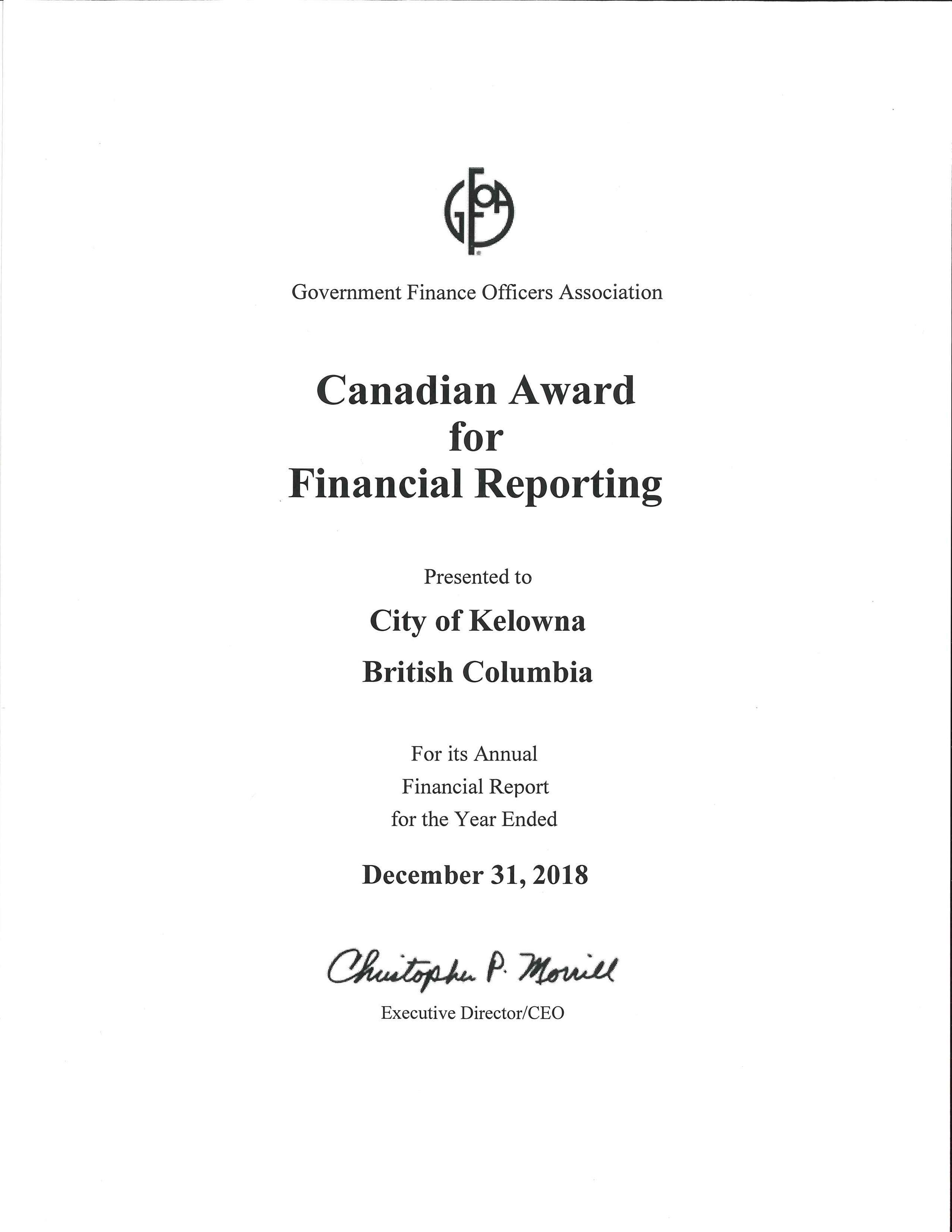
2018 Annual Report
This is the 17th consecutive year the City has received the award recognizing excellence in governmental accounting and reporting.
government finance officers association
distinguished budget presentation award
2019 Financial Plan
This is the 18th consecutive year the City has received the highest form of recognition for governmental budgeting.
age-friendly bc recognition
BC Ministry of Health
Recognizing the Community For All Action Plan
Kelowna uniquely offers opportunities for seniors, people of all ages and abilities to stay active, enjoy good health and connect with their community.

bc climate action community – climate leader
Union of British Columbia Municipalities (UBCM) Green Communities Committee (GCC)
esri canada’s award of excellence
Recognized for developing a Model City parcel-based GIS tool that creates a digital twin of Kelowna to pool property data to advance evidence-based decisions.
gold quill award of merit
International Association of Business Communicators
For the Pick Your Path to 2040 engagement exhibit for residents to give feedback on possible growth scenarios with results being used in the Official Community Plan and Transportation Master Plan updates.
gold award for excellence in planning
Planning Institute of British Columbia
For the Equity and Inclusion in Housing Needs Assessments
2019 bc client of the year award
Association of Consulting Engineering Companies
2019 city of excellence award for safety
BC Municipal Safety Association
The City of Kelowna was presented with the Education Award in recognition of our collaborative efforts with FortisBC to promote safe excavation practices.
worksafe bc certificate of recognition
Resulting in $190,000 premium rebate.

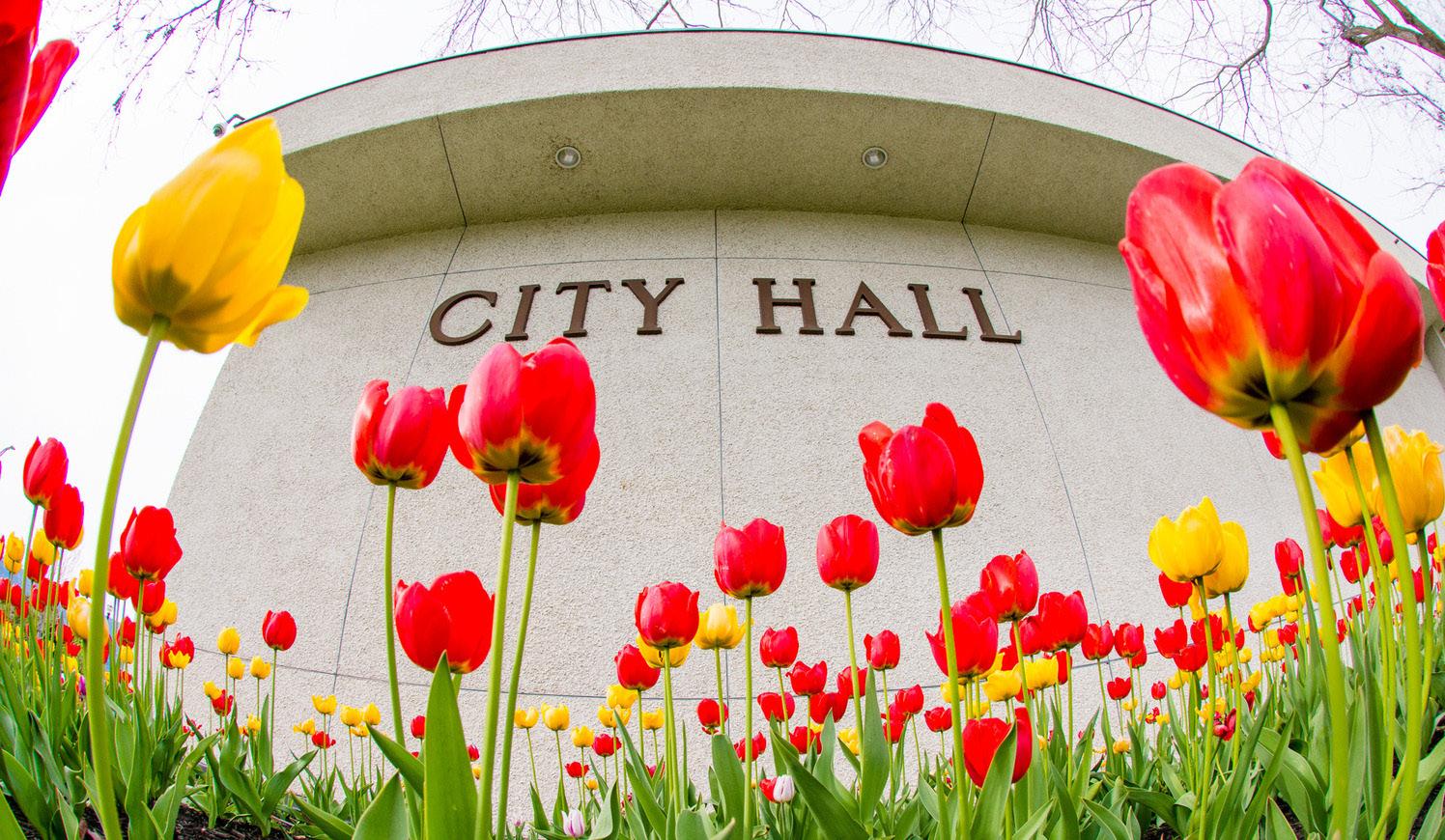

Council Priorities 2019-2022 identifies the strategic shifts, improvements and changes that are important to Council, the community and organization. It is an open and accessible commitment to how we will advance the Imagine Kelowna vision within the next four years. It will focus the work we do to become the Kelowna residents told us they want to see.
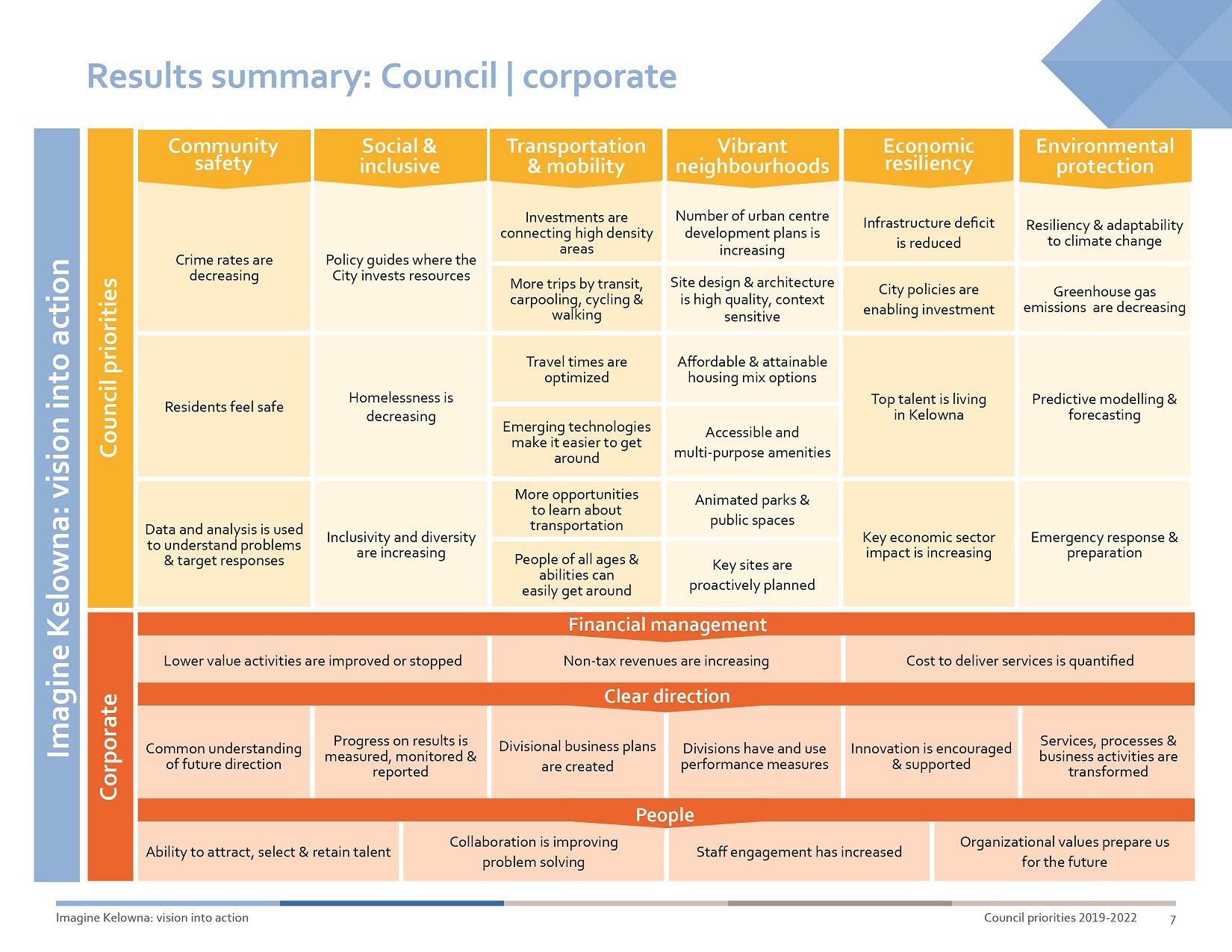
The ability to acquire and manage a portfolio of financial and physical assets that meet the current and future needs of our community. Read more about our Financial Management Strategies on page 31.
financial strategy financial principles plans that influence financial decisions
• Assets – New
• Assets – Renew
• Debt
• Development Financing
• Grants
• Operations
• Partnerships and Enterprise
• Property Taxation
• Reserves and Surplus Funds
• User Fees and Charges
• Sufficient
• Pragmatic
• Flexible
• Transparent
• Balanced
• Council Priorities
• Official Community Plan
• Imagine Kelowna vision
• 10-year Capital Plan
• 2030 Infrastructure Plan
• 20-year Servicing Plan
• Community Trends Report
a look back at 2019
Through Imagine Kelowna residents told us we need to be agile, resilient and unafraid to do things differently based on four principles: connected, collaborative, responsible and smarter. As we look back at services delivered and our accomplishments in 2019 we invested in safety, embraced diverse transportation options, created great public spaces, took action to be resilient in the face of climate change, addressed emergent community issues including housing diversity and affordability and supported healthy neighbourhoods.
Imagine Kelowna is a vision to 2040 and in 2019 we laid the foundation through strategic long-term planning to help get us there. This included the launch of Council Priorities 2019-2022. It is our strategic direction with commitments by Council and the organization of the results we want to see in the next four years.

community safety
Overall, nearly three-in-ten residents (28%) have been a victim of a crime in Kelowna in the past year. Of those, just over half (53%) say that they reported the crime to the police. To help encourage residents to report all crimes to the RCMP we supported the launch of the Kelowna RCMP’s Online Crime Reporting Tool pilot project for residents to report non-emergency crimes online.
Security cameras and improved lighting installed at both Chapman and Memorial Parkades have increased visibility in an effort to help residents feel safer when parking their vehicles. We also collaborated with enforcement and security partners to enhance street level and civic facility security on the Okanagan Rail Trail, Leon Avenue, City parkades and parks.
We also introduced an infrastructure levy to address the nearly $500 million infrastructure deficit identified in the 10-Year Capital Plan. Strong financial management is the pillar of how we are able to best serve the community and deliver infrastructure and initiatives that will continue to make Kelowna an attractive place to live, work and invest in.
1 8
We continue to support the Journey Home Strategy; addressing homelessness in collaboration with community partners and other levels of government was a key focus in 2019, particularly as the winter approached and providing emergency sheltering to support our most vulnerable residents was a necessity.
We worked diligently with community and Provincial partners to find solutions to keep everyone safe and maintain access to the services they need. As is our legal obligation, the City designated two emergency winter sheltering sites which included security presence (private, Bylaws and RCMP), a warming tent and provisions in December. We also supported the opening of a temporary emergency shelter on Fuller Avenue in late December which provided 40 spaces for those without shelter.
In support of a housing-first model, Council approved three housing with supports sites to be developed by BC Housing. Combined, the housing to be provided at the McCurdy Road, McIntosh Road and Agassiz Road will add more than 150 units to help those experiencing homelessness to transition into homes with support. These are in addition to the opening of Hearthstone and Heath House in late 2018 and early 2019 which, combined, provided homes to nearly 90 individuals.
We want people of all ages and abilities to get around the city easily. In 2019, work continued on developing our Transportation Master Plan to 2040, which will be unveiled in 2020. It is a long-range plan that will identify strategic, prioritized investments needed over the next 20 years to create a safe, cost-effective and sustainable transportation network.
We continued to invest in expanding our active transportation corridors with the opening of the new two-way cycle tracks on Sutherland Avenue and Ethel Street – making it easier and safer for residents to choose biking as their option to get around.
We also launched a bikeshare permit program that includes electric bicycles, electric scooters and pedal bikes, resulting in almost four times more utilization of each mode of transportation per day, compared to last year’s pedal- bike program.
In 2019 we were able to complete the repairs, renovations and re-open the popular City Park Water Park which was damaged beyond use during the 2017 flooding. Construction included an entirely new water delivery and disposal system that is now flood resistant.
We continue to look at ways to expand public beach access. In addition to access improvements the Poplar Point Drive Beach Access #1, Hobson Road Beach Access, Manhattan Drive Beach Access, and Bluebird Road North Beach Access, in 2019 we purchased a 0.16-hectare property along Lakeshore Road for $2.7 million for the future expansion of Rotary Beach Park.
As the city continues to grow, thoughtful and comprehensive urban plans to create complete and strong neighbourhoods is a priority and a result we want to see. As an example, in 2019 Council endorsed the Capri-Landmark Area Centre Plan, a strategy to enhance and redevelop one of Kelowna’s central neighbourhoods over the next 20 years.
We adopted a new bylaw to allow and regulate short-term rental accommodation operations, following extensive public and stakeholder engagement that heard from more than 2,500 people. The final regulations reflect the community’s diverse needs and interests, aiming to protect long-term rentals, limit impacts to neighbourhoods and ensure equity among all accommodation providers. In support of arts and culture in the city, the 2020-2025 Cultural Plan was launched during the annual Culture Days celebrations in the Fall of 2019. The plan was developed with internal and external advisory groups, cultural organizations, the business sector, artists and the public to create a community-based plan for culture in Kelowna over the next six years.
Council also endorsed recommendations of the Downtown Parking Plan, with the intent to improve availability of short-term parking spaces, ensure the system pays for itself so that general taxation is not impacted, improve customer service and provide a balanced transportation network for residents. Recommendations will be implemented through 2019 and 2020.
Maintaining our roads and sidewalks is an essential part of what we do to serve residents. In 2019, the City spent $4.47 million to re-surface nearly 42.2 lane kilometres along 19 different road segments in the springtime, the City also spent $2.4 million for snow removal. We also added new sidewalk sections including on: Rutland Road near Belgo Elementary, between Venus Road and Holbrook Road West, on Gordon Drive between Clement Avenue and Trench Place, and on Hollywood Road between Highway 33 and Hollydell Road.
Upgrades to parks in 2019 include:
• Rowcliffe Park
• Rutland Centennial Park
• Bankhead Park
• Glenmore Recreation Park
• Bellevue Creek Linear Park
• Mission Creek Mountain Bike Skills Park
• New pedestrian bridge at Bellevue Creek
Like an aging house that needs a roof replacement or a new furnace, City infrastructure needs ongoing maintenance investments. We also need to look ahead at our future infrastructure needs and to plan for the financial costs of our growing community. In 2019 Council endorsed the introduction of an Infrastructure Levy to address a nearly $500 million infrastructure deficit identified in the 10-Year Capital Plan and a new development cost charge (DCC) to support parks development.
Complementing the levy, we also updated the Development Cost Charges (DCC) Bylaw to reflect current construction and land costs to ensure DCC revenue adequately funds infrastructure projects required to service growth.
We manage over $3.3 billion worth of public infrastructure assets. To help us continue to be fiscally responsible and manage these effectively, in 2019 we implemented Phase 1 of the Asset Management System to track the performance, maintenance and conditions of these assets.
Kelowna International Airport (YLW), which welcomed more than 2 million passengers in 2019, is a key economic generator for the City. As the 10th busiest airport in Canada, YLW’s total economic impact is 4,500 jobs and $789 million to the province of British Columbia. Fully self-funded, it has no impact on taxation, yet the output it provides for the tourism industry, job-creation and for business travel is significant.
In 2019, we substantially completed design for Phase 1, Phase North and Phase 2 of the terminal expansion at YLW. Several improvements were made to enhance passenger experience including the addition of new Kid’s Zone, an outdoor Xeriscape garden and an additional 600 long term parking spaces. YLW also upgraded all taxiway and apron lights to LED from incandescent lighting, resulting in decreased operating and maintenance costs and a longer lifespan.
We know first-hand through the flooding and wildfire events experienced in the past few years, the devastating effects natural disasters and climate change can have on the community.
2019 saw us continue to recover from past events, notably the 2017 flooding, but also saw us invest in proactive mitigation efforts through partnerships and securing grants and funding from different levels of government. This included a $22 million funding contribution from the Government of Canada Disaster Mitigation and Adaption Fund to support the Mill Creek Flood Protection project. This eight-year program will result in added resiliency to potential flood events throughout the city.
We also completed a Kelowna Major Systems Flood Risk Assessment using a $250K grant from the National Disaster Mitigation Program. This analysis of existing infrastructure and natural assets was conducted for potential flood events from Okanagan Lake, Mill Creek, Bellevue Creek, Brandt’s Creek and Gopher Creek. We also started work on new and updated Flood Hazard Mapping to more precisely identify flood prone areas impacted by storms and climate change using a $150K grant from Union of BC Municipalities (UBCM) and the Community Emergency Preparedness Fund (CEPF) program.
New flow monitoring stations have been installed on Mill Creek and Scotty Creek. We also replaced the Spencer Road culvert crossing of Mill Creek with an enhanced flood and debris resistant arched crossing using a $750K grant from the UBCM Community Emergency Preparedness Fund.
The majority of the City’s budget revenue comes from sources other than taxation. Examples of other sources include fees and charges, reserves and grants. Historically, taxation is approximately one-third of the funding needed for the annual budget, with the remainder coming from those other sources.
We continue to look at innovative ways to generate revenue so we can deliver services and improvements while minimizing impact to taxes. This includes continuing to expand the City’s Dark Fibre network. Revenues increased 30 per cent in 2019. UBC Okanagan and Okanagan College are now connected and four City facilities have been added to the service connection.

We also continue to grow our partnership and advertising program. In 2019 to promote carbon monoxide (CO) safety, the Kelowna Fire Department partnered with FortisBC to knock on nearly 750 doors in the Lower Mission and Rutland neighbourhoods to check homes for working CO alarms. If a home did not have one, firefighters gave and properly installed on-the-spot a combined CO and smoke alarm provided by FortisBC.
Launching Council Priorities 2019 -2022 was the most significant step taken in 2019 to provide clear direction of where the organization is headed in the future. We are committed to tracking and reporting on performance measures annually for increased accountability and transparency of the work we are doing to serve the community.
The City has more than 1,000 employees: these are, for example, the crews that pave our roads and build sidewalks, park staff who conduct daily sweeps of our parks and beaches, bylaw officers who help keep our community safe and orderly, firefighters who answer the call, landfill operators who oversee waste management to keep our city clean, water treatment plant and utilities operators who ensure it is safe for you to turn on the tap, strong leadership to guide the organization, planners who guide developers through building permits and applications, and the cashiers and accountants who process payments and ensure City finances are managed effectively and transparently. kelowna.ca/careers
The City of Kelowna is committed to financial strength and stability. The City defines this as the ability to acquire and manage a portfolio of financial and physical assets that meet the current and future needs of our community. This commitment to excellence was recognized again by the Government Finance Officers Association. In 2019 and for the seventeenth year in a row, the City was awarded the Canadian Award for Financial Reporting and for the eighteenth year, the Distinguished Budget Presentation Award.
The Government Finance Officers Association of the United States and Canada (GFOA) awarded a Canadian Award for Financial Reporting to the City of Kelowna for its annual financial report for the fiscal year ended December 31, 2018. The Canadian Award for Financial Reporting program was established to encourage municipal governments throughout Canada to publish high quality financial reports and to provide peer recognition and technical guidance for officials preparing these reports.
In order to be awarded a Canadian Award for Financial Reporting, a government unit must publish an easily readable and efficiently organized annual financial report, whose contents conform to program standards. Such reports should go beyond the minimum requirements of generally accepted accounting principles and demonstrate an effort to clearly communicate the municipal government’s financial picture, enhance an understanding of financial reporting by municipal governments, and address user needs.
A Canadian Award for Financial Reporting is valid for a period of one year only. We believe our current report continues to meet the Canadian Award for Financial Reporting program requirements, and we are submitting it to the GFOA.
The 2019 taxation increase averaged 4.10 per cent for all property classes. This increase reflected resources allocated to emergent issues faced by the community such as housing affordability and diversity, environmental resiliency and safety. The City was also able to continue the commitment to deliver balanced transportation options as well as renewing and expanding Kelowna parkland and waterfront access. The use of tax revenue and development cost charges generated from new growth assist in providing a balanced approach to the expansion of services and infrastructure required to accommodate growth within the municipality.
The City budgeted to collect a total of $248.6 million in taxation revenues, 57 per cent of which was retained for municipal purposes. The remaining 43 per cent is levied on behalf of other governments and agencies to provide funding for schools, the Regional District of Central Okanagan shared services, libraries, regional hospital, Kelowna business improvement areas, and for BC Assessment to cover the City’s share of costs associated with providing assessment information.
The City has historically relied on pay-as-you-go rather than debt financing for major infrastructure needs wherever possible in achieving strategic servicing goals. In 2019, 4.2 cents of each municipal tax dollar collected was budgeted for tax-supported debt servicing programs. The 1.1 cent decrease from 2018 is due to lower interest rates on borrowing for the Police Services Facility and H20 Adventure + Fitness Centre. Pay-as-you-go capital project funding represented 9.7 per cent of the 2019 taxation requirement.
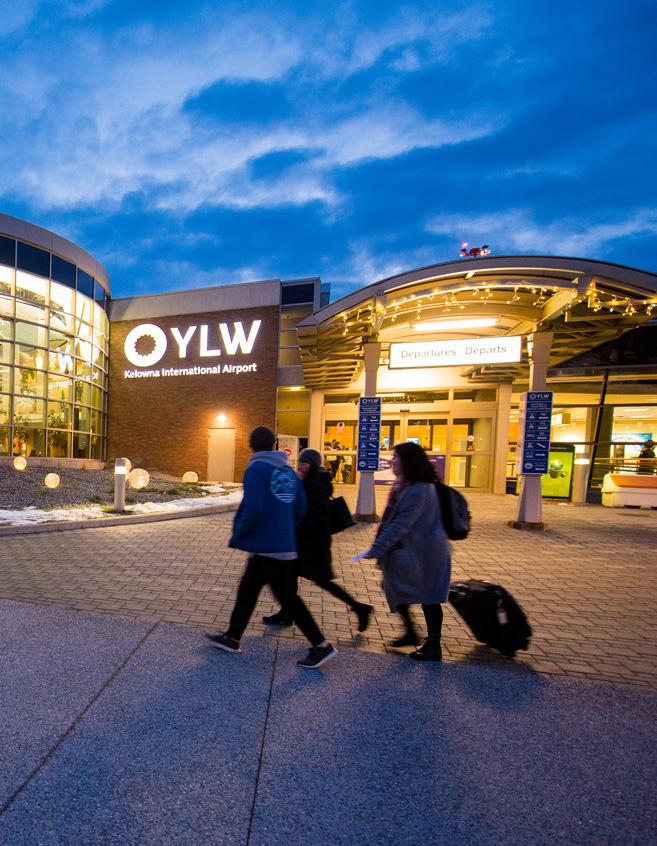
City reserves provide a financial mechanism for saving money to finance all or part of future infrastructure, equipment and other requirements. Reserve funds can also provide a degree of financial stability, by reducing reliance on indebtedness to finance capital projects and acquisitions, flexibility to leverage opportunities as they arise, or safeguards to extraordinary tax increases.
Development cost charges (DCCs) are fees that municipalities collect from new development to help pay the cost of infrastructure services that are needed for growth. Imposed by bylaw pursuant to the Local Government Act, the charges are intended to facilitate development by providing a method to finance capital projects related to roads, drainage, sewer, waterworks, and parkland.
The City’s DCC program supports community development and integrates with longer-term plans. Infrastructure requirements are based on the Official Community Plan that estimates a resulting population of 161,701 by the end of 2030. The 20-Year Servicing Plan and Financing Strategy provides the infrastructure requirements to 2030 along with the cost sharing for various projects. Cost sharing methodologies reflect the level of benefit to existing taxpayers and new growth. Charges are based on the demand placed on services by different residential types, commercial, industrial, and institutional growth.
The latest update to the 20-Year Servicing Plan impacted DCC rates with the changes taking effect in April 2019. The DCC rates were updated to reflect the construction and land costs of the day. This plan reflects a total program cost of $880 million. The funding for the program is 67 per cent from Development, 28 per cent from City funds, and 5 per cent from senior levels of government. Arterial Roads maintain the largest share of the program at $518 million; followed by Park Land acquisition at $165 million, Wastewater Treatment at $88 million, Water Distribution at $64 million, and Wastewater Trunks at $45 million. Subsequent to year-end an amendment to the DCC bylaw was adopted by Council in February 2020 to allow for the collection of DCCs to fund DCC eligible park development and linear park acquisition projects to the year 2030. This bylaw amendment will result in an additional $113 million of park infrastructure by 2030.
Local governments are permitted to temporarily lend available money from one DCC reserve fund to another. The money, along with appropriate interest, must be returned to the original reserve fund. For 2019, a deficit in Water Sector B reserve fund was covered from Water Sector A, and a deficit in the Wastewater Treatment reserve was covered by Water Sector A and Roads Sector A reserve fund.
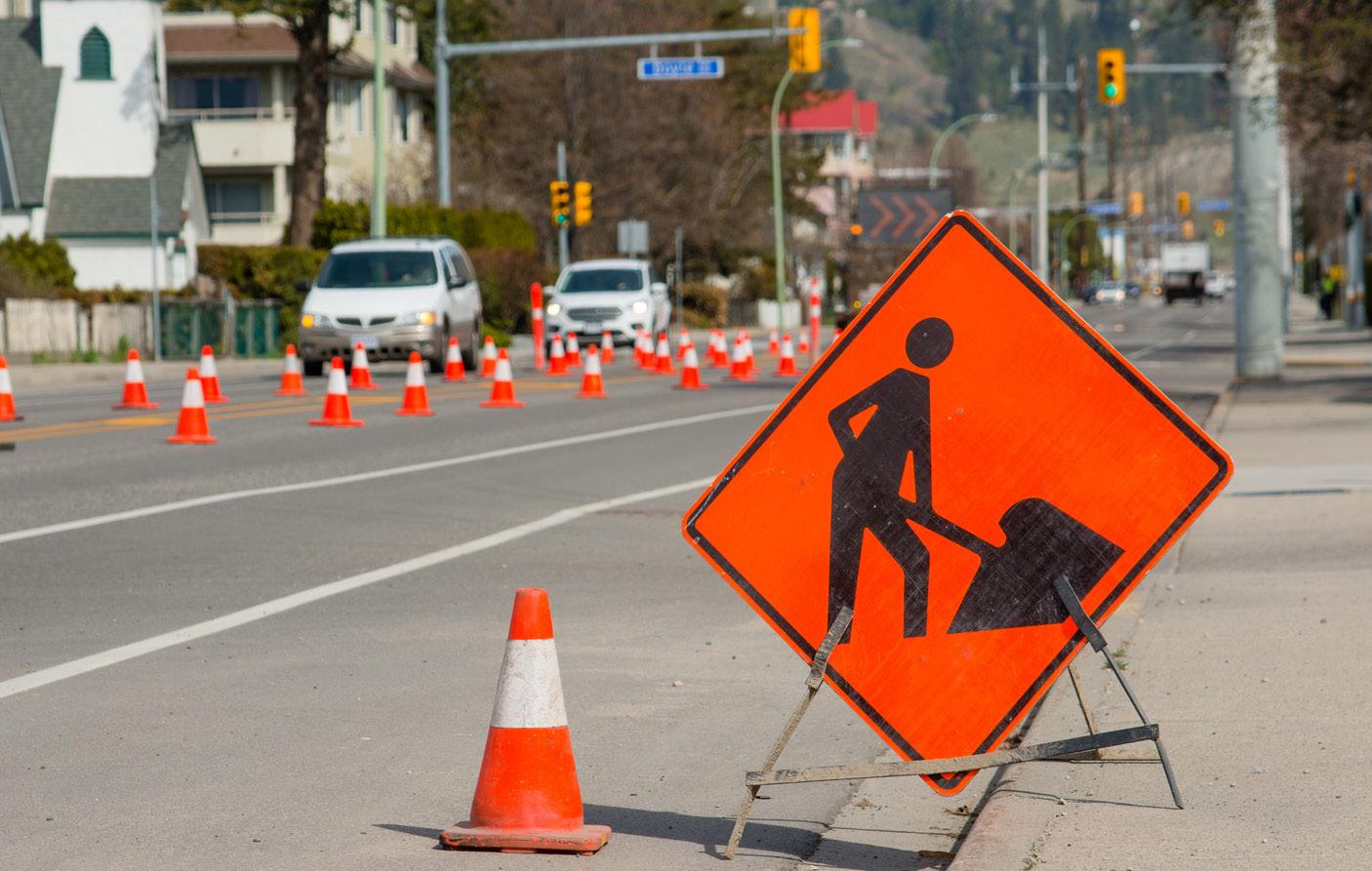
The Local Government Act requires local governments to assist in the cost of new infrastructure. The municipal assist factor reflects Council and the community’s support towards the financing costs of new infrastructure. The level of the assist, determined by City Council, reflects a benefit to the existing population while encouraging development and housing affordability.
Principles and Strategies for Financial Strength and Stability have been adopted by Council establishing guidelines for how the City will acquire and manage a portfolio of financial and physical assets that meets the current and future needs of our community.
The 10 financial management strategies are:
assets – new
Parks
$6.4 million – Parkland Acquisition at 3676 Lakeshore Road, 1325 Sutherland Avenue and 1936/2012 Lindahl Street.
Roads
$4.1 million – Stewart Road, Sutherland Active Transportation Corridor (ATC) and South Perimeter Road.
Water
$175K – South End Water Upgrades and Skyline Pump Station.
Wastewater Trunks and Treatment
$6.1 million – Airport Gravity Main Bypass, Guy Street Lift Station, Gyro Force Main and debt repayment.
Total program expenditures are projected at $31.1 million.
Parks Acquisition
$8.4 million – Dewdney park expansion and planned parkland acquisition.
Parks Development
$6.0 million – Pandosy Waterfront Park, Rutland Centennial Park, Ponds Community Park, Rowcliffe Park and Gopher Creek Linear Park.
Roads
$9.5 million – South Perimeter Road, McCulloch Road (KLO, Hall, Spiers) Improvements, Clement Avenue, Lakeshore Road (Bridge, Road and ATC), Hollywood Road and ATC, Casorso Road ATC , Dilworth ATC, Ethel ATC, Sutherland ATC, Houghton ATC and property acquisitions for road widening.
Water
$974K – Poplar Point to Dilworth Mountain Transmission Upgrade, Offsite & Oversize Program, South End Water Upgrades and Skyline Pump Station Electrical Building Upgrades.
Wastewater Trunks and Treatment
$6.2 million – Guy Street Lift Station, Swordy Road Sewer Upgrades, Water Street and Gyro Force Mains and debt repayment.
Expenditures for new assets will be prioritized based on social, economic and environmental factors and life cycle cost implications. Emergent opportunities will be evaluated against existing priorities. Investment in new assets should follow the long-term capital plan. The decision-making process for new asset investment will be documented, transparent and clearly communicated to Council, staff and the community.
The City will invest in existing infrastructure renewal in accordance with the long-term capital plan. Funding for asset renewal will be balanced against service levels and risk tolerance. Life cycle costs should be managed through preventative maintenance and renewal strategies.
debt
General Fund debt servicing costs will be maintained at or below a targeted level of annual taxation demand. The City’s debt capacity will be preserved by limiting the use of debt to fund only one-time major capital projects. If possible and when beneficial, debt will be paid down earlier. Financing for less than a five-year term will be completed through internal financing. Impacts on overall City debt levels from “self-funded” cost centres and Funds will be reviewed and understood.
development financing
Developers will pay their fair share for growth-related infrastructure through DCCs and other tools. Where appropriate, other funding can be used to provide additional capacity over and above the current OCP horizon. Taxation- funded DCC’s through grant programs may be used to encourage economic development and community projects.
Grants will only be pursued for the City’s priority projects. Grant funding will not increase the scope of a project without Council endorsement. Annual project funding must be sufficient without conditional grants. Long-term financial planning will rely on unconditional grant opportunities only.
All services, including new services, must be aligned with the City’s priorities and reviewed regularly. The full financial cost of service and staff requirements will be understood by Council and administration. Future changes in operating costs, including personnel resourcing requirements, will be considered in long-term capital and financial planning. Ongoing operating activities will only be funded through taxes, fees and charges.
The City will pragmatically partner with other entities to deliver community services and amenities. The City will explore access to new sources of capital and revenue streams. The City will leverage existing assets to attract private sector involvement. The City will leverage the expertise of outside partners. Services from partnerships will be reviewed regularly to ensure the needs of the City continue to be met. The City supports organizations within the community that enhance the quality of life.
Property taxes will remain as stable as possible over time. Property taxes will be comparative with similar communities. Increases to property taxes will be balanced among assessment classes. Property tax information will be transparent and easy to understand. Property taxes will reflect the infrastructure, services and service levels that the community believes are important.
The purpose of each reserve will be documented and reviewed regularly. Ongoing operating requests will not be funded from reserves. Accumulated surplus will only be used as an emergency funding source.
*Waivers are for Affordable Rental Housing and are paid for through taxation.
The DCC program underwent a minor update in 2019 and was reviewed and approved by Council.
On April 18, 2016 Council approved the 2030 Infrastructure Plan, which identifies all the City’s infrastructure investment needs for the next 15 years (2016 - 2030).
Everyone will pay a fair amount for the services they receive. Services will be reasonably accessible by all citizens. User fees will be transparent and easy to understand.
Charitable or Philanthropic
August 7, 2020

mayor basran and members of council, I am pleased to present the City of Kelowna’s 2019 Annual Financial Report for the year ended December 31, 2019. The purpose of this report is to publish the City of Kelowna’s Consolidated Financial Statements, Auditor’s Report and to provide an update on City services and projects, pursuant to Sections 98 and 167 of the Community Charter.
Preparation of the Consolidated Financial Statements is the responsibility of City Council and City of Kelowna management. These statements are prepared by City staff in accordance with Canadian public sector accounting standards. Management is also responsible for implementing and maintaining a system of internal controls for the safeguarding of assets and to provide reasonable assurance that reliable information is produced.
External auditors, Grant Thornton LLP, conducted an independent examination in accordance with Canadian auditing standards to express their opinion on the Consolidated Financial Statements. The City’s Audit Committee also reviewed the Consolidated Financial Statements to ensure they are comprehensive, reliable and understandable. The City received a clear audit opinion.
The launch of Council Priorities 2019-2022 guides how the City will acquire and manage a portfolio of financial and physical assets that meet the current and future needs of our community. The City continues to monitor and report financial health indicators as part of the annual financial reporting to the Audit Committee and Council. The financial indicators show that the City is well positioned to meet current financial obligations and has resiliency to navigate through the unprecedented challenges ahead for 2020.
The City ended the year with a $98 million increase to accumulated surplus, which now sits at $2.14 billion. The accumulated surplus is an indicator of the City’s overall financial viability and is equal to the sum of the net financial assets and non-financial assets representing resources (both financial and non-financial) that may be used to provide future services.
Revenues decreased over 2018 by $4.8 million, mainly due to the one-time impact of integrating revenues from the South East Kelowna Irrigation District (SEKID) in 2018. Expenses increased over last year by $11 million to $298 million as a result of increases in protective services personnel (RCMP and Fire Prevention Officers), acquisition of land, contract increases, and the disposal and write-down related to the demolition of the former RCMP building.
The General Fund ended 2019 with an $8.1 million unappropriated surplus from operations. $7.6 million was put into reserves and $0.5 million added to accumulated surplus. The accumulated surplus balance of $4.3 million adheres to financial best practices and is to be used only for extraordinary events. For the 2019 year end this balance is 3.4 per cent of the 2019 taxation requirement.
In 2019 the City continued to plan for a safe, vibrant, and sustainable community along with balancing the community’s interest in maintaining levels and quality of services. The City continued work on community safety and the Journey Home Strategy. The City invested in existing transportation and active transportation in the Sutherland Road and Ethel Street areas as well as the cycling overpass at the University. Parkland projects such as the Laurel Packinghouse courtyard, Kerry Park and Knox Mountain also saw investment in 2019. To reduce the infrastructure deficit, the City introduced an annual infrastructure levy that will be used to renew existing assets, accommodate growth and improve services that would otherwise not be funded. The City also continued work on the long-term integrated water supply implementation for South East Kelowna residents who were previously serviced by the Irrigation District. In 2019, the City continued with Imagine Kelowna by taking this vision into action with the Council Priorities 2019 -2022 and in spring 2020, provided a progress report on its 2019 achievements.
The City of Kelowna is well positioned to continue delivering quality services to its current and future residents, businesses and visitors in support of a community that is collaborative, responsible, connected and resilient. Respectfully submitted,
– Genelle Davidson, CPA, CMA
As at December 31, 2019 (in thousands of dollars)
For the Year Ended December 31, 2019 (in thousands of dollars)
Contingent liabilities and Commitments (Notes 8 and 9)
See accompanying notes to the consolidated financial statements.
Genelle Davidson, CPA, CMA Divisional Director, Financial ServicesSee accompanying notes to the consolidated financial statements.
Colin Basran Mayor, City of KelownaFor the Year Ended December 31, 2019 (in thousands of dollars)
For the Year Ended December 31, 2019 (in thousands of dollars)
Net inflow (outflow) of cash and cash equivalents related to the following activities
See accompanying notes to the consolidated financial statements.

December 31, 2019
(all tabular amounts reported in 000’s of dollars)
The notes to the consolidated financial statements are an integral part of the statements. They explain the significant accounting and reporting policies and principles underlying these statements. They also provide relevant supplementary information and explanations which cannot be conveniently expressed in the consolidated financial statements.
The consolidated financial statements are the responsibility of and prepared by management in accordance with Canadian public sector accounting standards (PSAS). The preparation of these consolidated financial statements necessarily involves the use of estimates based on management’s judgment, particularly when transactions affecting the current accounting period cannot be finalized with certainty until future periods.
The City of Kelowna’s resources and operations are segregated into General, Airport, Wastewater Utility, Water Utility, Development Cost Charges and Statutory Reserve Funds for accounting and financial reporting purposes. The consolidated financial statements include all the accounts of these funds. All material interfund transactions and balances have been eliminated within the consolidated financial statements.
The accrual method for reporting revenues and expenses has been used. Revenues are recognized in the period in which the transactions or events occur that give rise to the revenues. Expenses are recognized in the period in which the goods or services are acquired and a liability is incurred.
Assets held for resale
Assets held for sale are those expected to be sold within one year. They are valued at the lower of cost or expected net realizable value. Cost includes amounts for improvements to prepare the asset for sale.
Inventory
Inventory is valued at the lower of cost, determined principally on a weighted average and specific item basis, or replacement cost.
The City issues the majority of its debt instruments through the Municipal Finance Authority. As a condition of these borrowings, a portion of the debenture proceeds is withheld by the Municipal Finance Authority as a debt reserve fund. The City also executes demand notes in connection with each debenture whereby the City may be required to loan certain amounts to the Municipal Finance Authority. These demand notes are contingent in nature. The Debt Reserve and Demand Note balances are as follows:
The City of Kelowna’s pension plan follows the guidelines of the Municipal Pension Plan which is administered by the Province of British Columbia for all British Columbia municipalities. The City and its employees contribute to the Municipal Pension Plan (a jointly trusteed pension plan). The board of trustees, representing plan members and employers, is responsible for administering the plan, including investment of assets and administration of benefits. The plan is a multiemployer defined benefit pension plan.
Reserves for future expenditures are non-statutory reserves which represent an appropriation of surplus for specific purposes. Transfers to reserves for future expenditures include funds to finance incomplete projects and accumulations for specific purposes.
The use of these funds is restricted by the Community Charter and associated Municipal Bylaws. Statutory reserve funds are funded 100% by cash and portfolio investments.
Intangible assets include works of art and historic assets located throughout the City. They are not reflected in these consolidated financial statements.
The City of Kelowna only capitalizes interest on projects being financed internally which will require debenture borrowing upon completion. Interest is calculated on monthly expenditures at the bank prime rate less 2%.
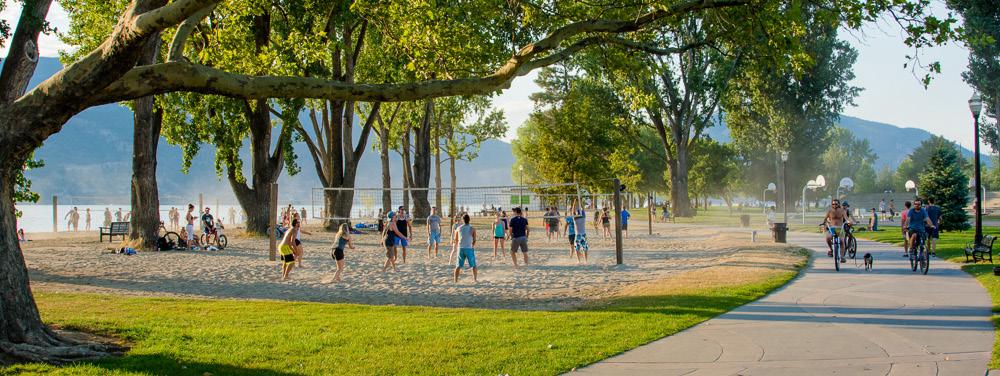
Work in progress
Work in progress represents capital projects under construction but not yet completed and are valued at cost.
The City records tangible capital assets, including assets held as work in progress or capital lease, at cost in the period they were acquired or when the asset is put into use.
All tangible capital assets are valued at cost which includes all costs directly attributable to acquisition, construction, development or betterment of the tangible capital asset.
Assets owned by the City but not paid for by the City including contributions, dedications, gifts and donations, are valued at fair value at the date of contribution, dedication, gift or donation, where fair value is reasonably determinable.
Tangible capital assets received as contributions are recorded at their fair market value.
Amortization
The cost less residual value of the tangible capital assets is amortized on a straight-line basis over the useful lives of the asset as follows:
Taxation revenue
Annual levies for non-optional municipal services and general administrative services are recorded as taxes for municipal purposes. Levies imposed by other taxing authorities are not included as taxes for municipal purposes. Taxes are recognized as revenue in the year they are levied.
Through the BC Assessment appeal process taxes may be adjusted by way of supplementary roll adjustments. The effect of these adjustments on taxes are recognized at the time they are awarded.
Fees and charges revenue
Charges for transportation, environmental health, building permits, water, wastewater, and airport are included in this category. These revenues are recorded on the accrual basis and recognized as earned which is usually when services are provided or facilities are utilized.
Development Cost Charges (DCC) contributions
Development Cost Charges (DCC) contributions are recognized as revenue during the period in which the related costs are incurred.
Government transfers
Government transfers are recognized as revenue in the period that the transfer is authorized, eligibility criteria, if any, has been met by the City, and a reasonable estimate of the amount to be received can be made.
Investment income
The City’s investments are disclosed in Note 3.
Investment income is recorded on the accrual basis and recognized when earned.
A portion of the City’s investments are invested in pooled funds of the Municipal Finance Authority of British Columbia. Earnings on these funds are allocated to the members from time to time based on the market value of the pool. The City recognizes only its share of the realized earnings of the pool. This revenue is recorded as investment income and the amount is added to the cost base of the investment.
To the extent that investments have no stated rate of return, investment income is recognized as it is received.
Expenses
Expenses are recorded in the period in which the goods or services are acquired and a liability is incurred.
Contaminated sites are a result of contamination being introduced into air, soil, water or sediment of a chemical, organic or radioactive material or live organism that exceeds an environmental standard. The liability is recorded net of any expected recoveries. A liability for remediation of contaminated sites is recognized when a site is not in productive use and all of the following criteria are met:
• an environmental standard exists;
• contamination exceeds the environmental standard;
• the City is directly responsible; or accepts responsibility;
• it is expected that future economic benefits will be given up; and
• a reasonable estimate of the amount can be made.
The liability is recognized as management’s estimate of the cost of post-remediation including operation, maintenance and monitoring that are an integral part of the remediation strategy for a contaminated site.
In late 2019, the City acquired and accepted responsibility to remediate a site located on Harvey Avenue. Clean up activities are expected to take place in 2020, primarily consisting of soil delineation and groundwater monitoring. Recognition of a liability in the amount of $130,000 is based on contractor estimates of the work expected to be undertaken.
There were no liabilities recorded as at December 31, 2018.

Management has made estimates and assumptions that affect the amounts reported in preparing these financial statements. Actual results could differ from the estimates. Significant areas requiring the use of management estimates relate to the determination of tangible capital assets estimated useful life and related amortization, allowance for doubtful accounts, contaminated site liabilities, landfill post closure costs and settlement costs associated with outstanding legal actions.
PS 3280 Asset retirement obligations
This section revises and replaces the existing Section PS 3270 Solid Waste Landfill Closure and Post-Closure Liability. This section applies to fiscal years beginning on or after April 1, 2022, with early adoption permitted.
PS 3400 Revenues
This section establishes standards on how to account for and report on revenue. This section applies to fiscal years beginning on or after April 1, 2023, with early adoption permitted.
PS 3450 Financial instruments
This section establishes standards for recognizing and measuring financial assets, financial liabilities and non-financial derivatives. This section applies to fiscal years beginning on or after April 1, 2022, with early adoption permitted. Adoption of this standard requires corresponding adoption of PS 1201 Financial Statement Presentation, PS 2601 Foreign Currency Translation and PS 3041 Portfolio Investments in the same fiscal period.
• PS 1201 Financial Statement Presentation
This section revises the general reporting principles and standards for the disclosure of information in the financial statements. This section applies to fiscal years beginning on or after April 1, 2022, with early adoption permitted.
• PS 2601 Foreign Currency Translation
This section revises and replaces the existing Section PS 2600 Foreign Currency Translation. This section applies to fiscal years beginning on or after April 1, 2022, with early adoption permitted.
• PS 3041 Portfolio investments
This section revises and replaces the existing Section PS 3040 Portfolio investments. This section applies to fiscal years beginning on or after April 1, 2022, with early adoption permitted.

Cash and cash equivalents consist of cash and short-term investments with maturities of 90 days or less from the date of acquisition.
Accounts
are recorded net of allowance and are comprised of the following:
investments are recorded at cost and are comprised of the following:
The City has an operating line of credit with the Royal Bank of Canada for an authorized amount of $5.0 million, bearing interest at bank prime rate less 0.50%. At December 31, 2019 the balance outstanding was $nil (2018 – $nil).
Deferred revenue
The City records deferred revenue for funds received in advance of services not yet rendered and is recognized into revenue during the period in which the service is provided. The City also records deferred revenue when a contract specifies how the resources are to be used and therefore funds received in advance are deferred until the period in which the requirements are met. Because these funds are restricted in nature they are shown as a liability.
Deferred development cost charges (DCC)
The City collects development cost charges to pay for a proportionate share of infrastructure related to new growth. In accordance with the Local Government Act, these funds must be deposited into a separate reserve fund. Because these funds are externally restricted in nature they are shown as a liability.

Sinking fund installments and mortgage payments on net outstanding debt and loans payable over the next five years and thereafter are as follows:
Schedule 1 provides a break down of tangible capital assets and work in progress. During the year, tangible capital assets with a cost of $1,164,262 (2018 – $486,223) were written off due to impairment.
Total debt issued was $205.5 million and total debt payable at December 31, 2019 was $105.6 million (2018 – $119.3 million). Schedule 3 provides a breakdown of long term debt.
5. accumulated surplus

Surplus detail as follows:
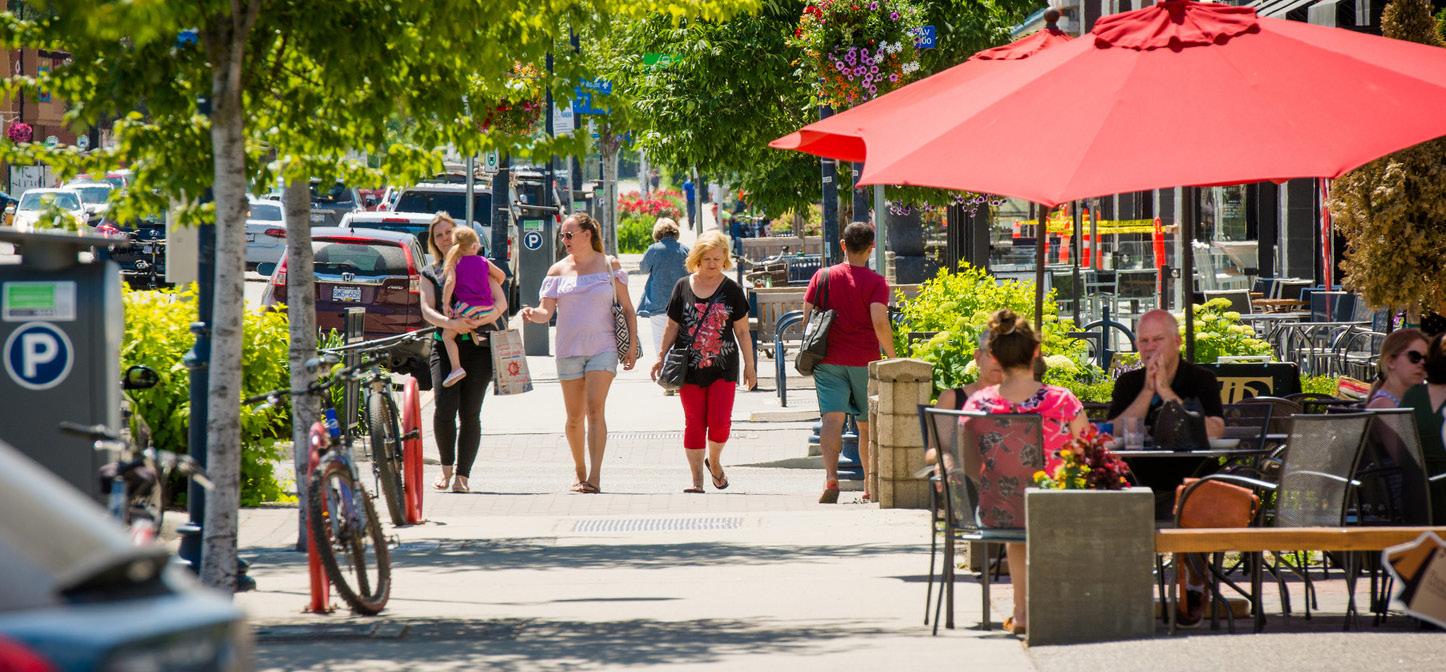
Taxation revenue comprises the following amounts raised less transfers to other governments:
Government transfers are the major source of transfers to the City. Government transfers received are for completed projects that meet the required criteria as set out by the Government body providing the funding. Government transfers do not include grants in lieu of taxes received from the Federal and Provincial governments. Due to the completion of projects in 2019 there are no deferred revenue balances related to these transfers. In 2019 the City received and recorded as revenue the following transfers:
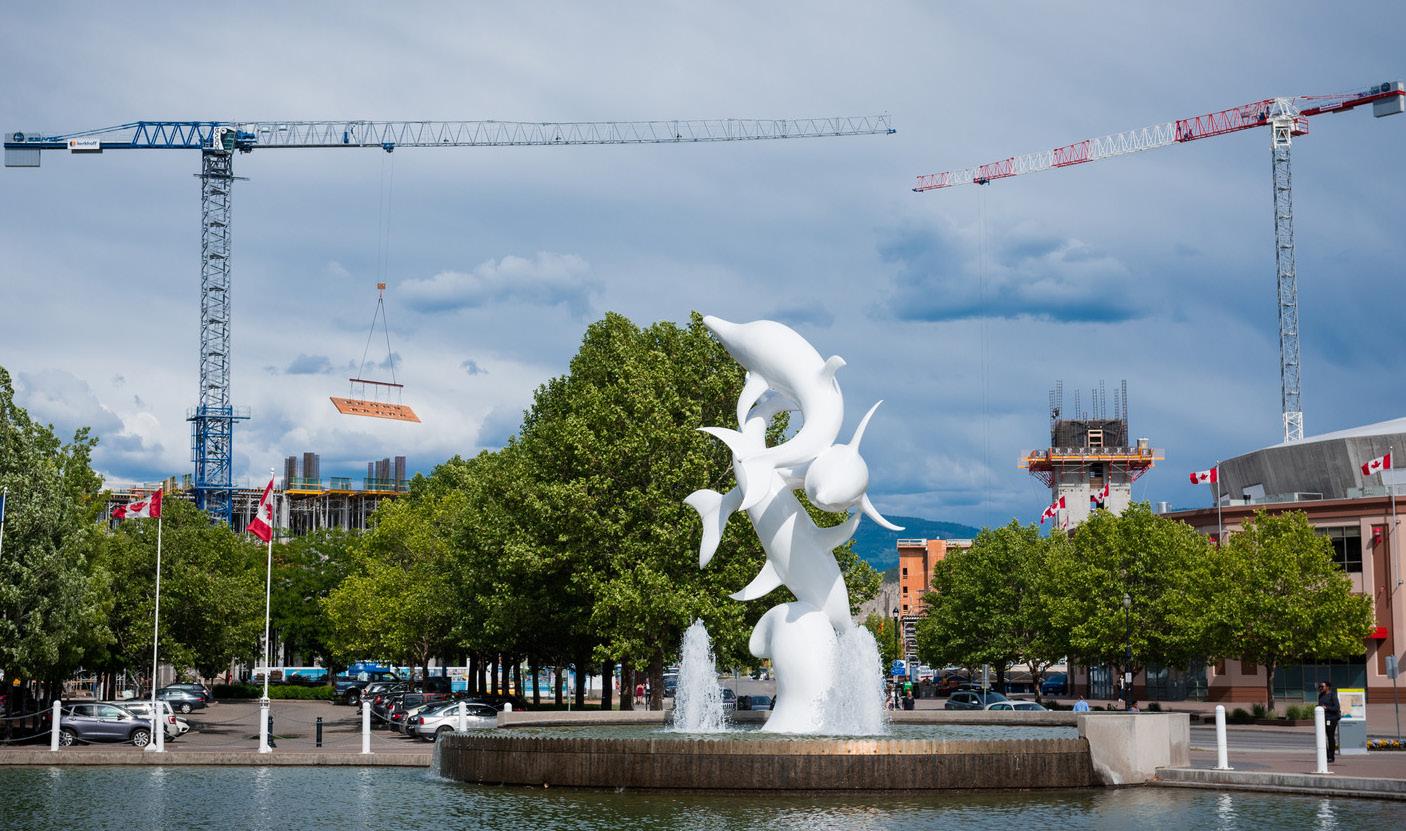
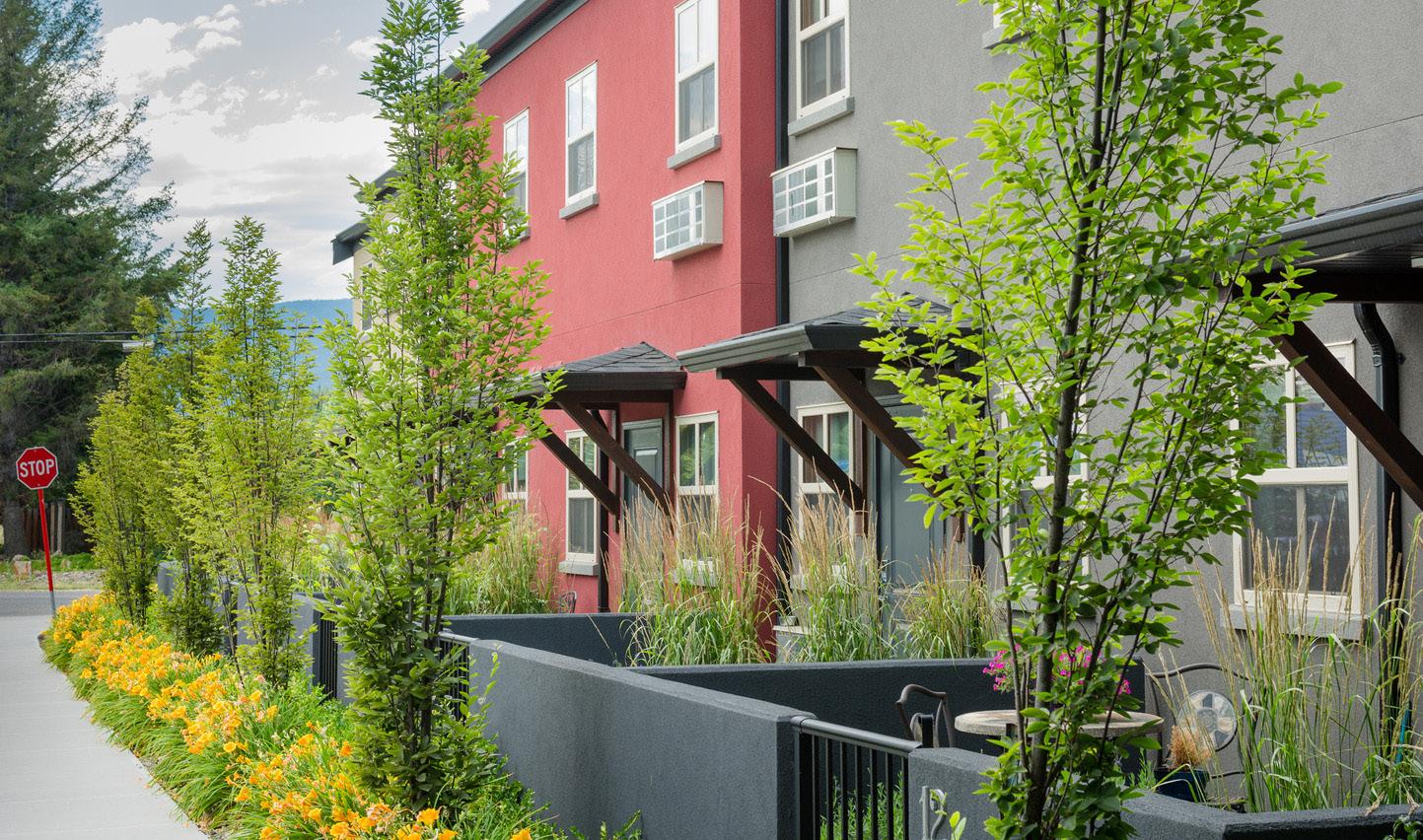
Regional District of Central Okanagan
Regional District debt is, under the provisions of the Local Government Act, a direct, joint and several liability of the District and each member municipality within the District including the City of Kelowna.
The loan agreements with the Regional District of Central Okanagan and the Municipal Finance Authority provide that if at any time the scheduled payments provided for in the agreements are not sufficient to meet the Authority’s obligation with respect to such borrowing, the resulting deficiency becomes a liability of the member municipalities.
The employer and its employees contribute to the Municipal Pension Plan (a jointly trusteed pension plan). The board of trustees, representing plan members and employers, is responsible for administering the plan, including investment of assets and administration of benefits. The plan is a multi-employer defined benefit pension plan. Basic pension benefits are based on a formula. As at December 31, 2018, the plan has about 205,000 active members and approximately 101,000 retired members. Active members include approximately 40,000 contributors from local governments.
Every three years, an actuarial valuation is performed to assess the financial position of the plan and adequacy of plan funding. The actuary determines an appropriate combined employer and member contribution rate to fund the plan. The actuary’s calculated contribution rate is based on the entry-age normal cost method, which produces the long-term rate of member and employer contributions sufficient to provide benefits for average future entrants to the plan. This rate may be adjusted for the amortization of any actuarial funding surplus and will be adjusted for the amortization of any unfunded actuarial liability.
The most recent valuation for the Municipal Pension Plan as at December 31, 2018, indicated a $2,866 million funding surplus for basic pension benefits on a going concern basis.
The City of Kelowna paid $7.5 million (2018 - $7.2 million) for employer contributions while employees contributed $6.3 million (2018 – $5.9 million) to the plan in fiscal 2019.
The next valuation will be as at December 31, 2021, with results available in 2022.
Employers participating in the plan record their pension expense as the amount of employer contributions made during the fiscal year (defined contribution pension plan accounting). This is because the plan records accrued liabilities and accrued assets for the plan in aggregate, resulting in no consistent and reliable basis for allocating the obligation, assets and cost to individual employers participating in the plan.
The City of Kelowna does not accrue expenses for post employment benefits such as retirement allowances or compensated absences (sick leave). City employees retiring do not receive any retirement allowance that either vests or accrues over the period of employment. Sick benefits do not accrue and are not vested. The City recognizes the expense for sick time when the event obligates the City to pay.
The City of Kelowna is currently engaged in certain legal actions, the outcome of which is not determinable at this time. Accordingly, no provision has been made in the accounts for these actions.
The amount of loss, if any, arising from these contingent liabilities will be recorded in the accounts in the period in which the loss is realized. The City of Kelowna has insurance policies and financial reserves to offset associated risks.
The City has entered into various agreements and contracts for services and construction with periods ranging from one to five years. The City has purchase orders open as at December 31, 2019 which have not been recorded in the accounts. The balance of these open purchase orders is not determinable at this time. The funding for the majority of these obligations has been set aside in reserves for future expenditures. These amounts will be recorded in the accounts in the period the goods and services, to which they relate, are received.
As required by PSAS and regulated by the Ministry of Environment & Climate Change Strategy, the City has agreed to obligations regarding the operation of the landfill site. These obligations include recognition of closure and post-closure liability. As currently engineered, and based on current waste disposal patterns, the landfill has a remaining life expectancy of 89 years. The estimated length of time needed for post-closure is 80 years.
The present value of future cash flows for the expected landfill closure and post-closure care costs is estimated to be $30.7 million based on a Design, Operations and Closure Plan (DOCP) completed in 2018.
The City’s liability for these landfill closure and post-closure care cost expenditures is recognized as the landfill site’s capacity is used. The reported liability of $4.1 million (2018 – $4.0 million) represents the portion of the estimated total expenditure recognized as at December 31, 2019. The remaining capacity of the landfill site is estimated at 27.2 million tonnes which is 91% of the site’s total capacity.
The liability and annual expenditure is calculated based on the ratio of current usage to the total capacity of the site and the discounted estimated future cash flows associated with closure and post-closure activities using an inflation rate of 0.96% and discount rate of 2.25%.
The reported liability is based on estimates and assumptions with respect to events extending over the remaining life of the landfill. Future events may result in significant changes to the estimated remaining useful life, estimated total costs, total or used capacity and the estimated liability. These would be recognized prospectively as a change in estimate when applicable.
The City has, under the terms of the partnering agreement between the City of Kelowna and YMCA of Okanagan Association, guaranteed repayment in the event that the YMCA of Okanagan Association defaults on a $1.8 million, 20-year loan issued in 2001. Under the agreement the City shall resume operation of the facility and assume responsibility for the repayment of the debt incurred by the YMCA of Okanagan Association. During 2010 an amendment was made to the agreement for additional financing of $700,000 for a 20-year term. As at December 31, 2019, the outstanding loan balance was $660,443 (2018 – $765,079). The City does not expect to make any payments on the guarantee and no amounts have been accrued in the financial statements.
The City has, under the terms of the Preferred Share Agreement between the City of Kelowna and RG Properties Ltd., purchased $6.0 million of preferred shares in RG Arenas (Kelowna) Ltd. at a cost of $1 per share. The terms and conditions of the purchase are subject to the terms of a Tripartite Agreement between the City of Kelowna, Royal Bank of Canada and RG Arenas (Kelowna) Ltd., RG Properties Ltd., Prospero Canadian Land Investment Fund Ltd. group of companies.
The City has, under the terms of the above noted Tripartite Agreement, committed to the annual purchase of community use time at the Multi-Purpose facility, commencing with substantial completion, on November 10, 1999 under the following terms:
(i) $1.3 million per annum for Years 1 to 3 comprised of a payment of $1.1 million, which for Years 2 and 3 is subject to a minimum CPI increase of 1% per annum and a maximum average CPI increase of 5% per annum, plus an annual payment of $150,000 without any adjustment for CPI;
(ii) $1.2 million per annum for Years 4 to 7, subject to a minimum CPI increase of 1% per annum and a maximum average CPI increase of 5% per annum;
(iii) $1.2 million per annum for Years 8 to 10, subject to a minimum CPI increase of 1% per annum and a maximum average CPI increase of 5% per annum, minus $150,000 per annum;
(iv) $1.0 million per annum for Years 11 to 20, subject to a minimum CPI increase of 1% per annum and a maximum average CPI increase of 5% per annum; and
(v) $0.5 million per annum for Years 21 to 30, subject to a minimum CPI increase of 1% per annum and a maximum average CPI increase of 5% per annum.
The year 2019 represented year 21 of the agreement.
Should the City not exercise, in its sole discretion, its option to renew any future term for community use time in the Multi-Purpose facility, under the above terms it shall be required to make a lump sum payment to RG Arenas (Kelowna) Ltd. on or before the 15th day of one of year 6, 11, 16, 21 or 26 commencing with the year of substantial completion in the following amounts:
2004 Year 6 $13.2 million
2009 Year 11 $11.9 million
2014 Year 16 $10.4 million
2019 Year 21 $6.7 million
2024 Year 26 $4.5 million
Upon such payment, no further amounts will be payable to RG Arenas (Kelowna) Ltd. and the City will have the right to the community use time for the period from the beginning of the year in which the payment was made until November 9, 2029 without any additional payment.
For years up to and including 2018, the City did exercise its option to renew the purchase of community use time under the above annual payments terms and accordingly did not make any of the lump sum payments of $13.2 or $11.9 or $10.4 million otherwise due to RG Arenas (Kelowna) Ltd. in years 6 or 11 or 16.
In 2019 (Year 21), the City chose to exercise its option to prepay for community use time rather than renew annually and made a lump sum payment of $6.7 million. No further amounts are payable under the Tripartite Agreement.
Royal
The Province of British Columbia and the Federal Government have an agreement with the Royal Canadian Mounted Police to provide police services for various municipalities in the Province, including the City of Kelowna. This agreement has a 20 year term expiring on March 31, 2032.
Kelowna Developments Ltd.
The investment in Kelowna Developments Ltd., a wholly owned subsidiary, is carried at its cost of $2. The company is inactive with no assets or liabilities and is being retained for potential future use.
RG Arenas (Kelowna) Ltd.
The investment in preferred shares in RG Arenas (Kelowna) Ltd. is carried at its cost of $6.0 million. The shares were purchased under the terms of the Preferred Share Agreement between the City of Kelowna and RG Properties Ltd. and are to be retained until 2029 per the terms of that agreement described in Note 9.
In addition to the performance deposits reflected in cash balances, the City is holding irrevocable Letters of Credit in the amount of $52.7 million (2018 – $45.0 million) which were received from depositors to ensure their performance of works to be undertaken within the City. These amounts are not reflected in the financial statements but are available to satisfy any liabilities arising from non-performance by the depositors. Included in the $52.7 million, the City is holding irrevocable Letters of Credit in the amount of $9.1 million (2018 - $7.9 million) which are received from developers to ensure payment of development cost charges in future years.
In accordance with PSAS, trust funds are not included in the City’s consolidated financial statements. The City administers a Cemetery Maintenance Fund for the perpetual care and maintenance of the City owned and operated cemetery. As at December 31, 2019 the Trust Fund balance is $3.0 million (2018 – $2.9 million).
The City of Kelowna is connecting communities and providing a multitude of services to the citizens of Kelowna. The City’s operations and activities are organized and reported by funds and departments. The General Fund reports on operations, funded primarily by property taxes, which include services provided by the City such as general government, protective services, transportation services, recreation and cultural services, as well as public health, and environmental and development services. The City also operates its own airport and City utilities comprised of the wastewater and water systems that are self-sustaining operations. Operating results reported by the following segments are included in Schedule 2.
General Government operations are primarily funded by property taxation and business tax revenues. The expenses within the department are for executive and legislative costs, general administration, and other general government areas such as community service grants and rental property operating costs within the municipality. The general revenue reported under the department includes revenues associated with taxation, business tax revenues and senior government payments in lieu of taxes. These revenues have not been apportioned to other departments supported by the General Fund.
Protective services are comprised of police services provided by the Royal Canadian Mounted Police, fire protection services, building inspection services and bylaw enforcement.
Police services include administration, crime investigation and prevention, traffic, prisoner custody and court liaison expenses.
The fire department is responsible for effective fire protection and public safety services to the City. This includes fire suppression and rescue, prevention and investigation, specialty rescue/first medical responses and fire safety inspections.
Transportation services are responsible for the delivery of municipal public works services related to the planning, development and maintenance of streets and roads, bridges, drainage systems, street lights, traffic lights and signals, parking lots and on-street parking, and public transit as well as maintenance of workshops, yards and other buildings. The mandate is to provide a safe, efficient, environmentally-sensitive and cost-effective transportation network.
Recreation and cultural services
Recreation and cultural services provide services related to recreation, leisure and culture including administration and program costs as well as grounds and building maintenance. Facilities managed within this area include parks and playgrounds, arenas, swimming pools, beaches, boat launches, stadiums as well as community and seniors centers. The H2O Adventure & Fitness Centre, Parkinson Recreation Centre, Kelowna Community Theatre, Kelowna Museum, Kelowna Library, Kelowna Art Gallery and the Rotary Centre for the Arts are some of the larger facilities included.
Public health services are comprised of cemetery operations and maintenance, environmental and development services including community planning and zoning as well as landfill operations.
Airport services
The Airport, owned and operated by the City of Kelowna, provides quality airport services in a safe and cost effective manner in compliance with Federal regulations. The Airport is accounted for in its own fund.
Kelowna’s sanitary sewer system collects, conveys, treats and disposes of domestic wastewater (derived from the home) and industrial wastewater (resulting from business use, manufacturing and processing). The system currently services approximately 70% of Kelowna’s population and continues to be extended to unserviced areas. Kelowna’s wastewater system has a treatment capacity of 72 million litres per day. Wastewater Utility is accounted for in its own fund.
The Water Utility is responsible for planning, designing, building, operating and maintaining the City’s Water Utility and is one of four water suppliers operating within Kelowna’s boundaries. The Water Utility is accounted for in its own fund.

Natural Gas Legacy Fund was created from an agreement with FortisBC for a 35 year capital lease for the natural gas distribution system within the City’s municipal boundary and a 17 year operating lease, expiring in 2018, whereby the City leased back to FortisBC the operations of the gas distribution system. The Natural Gas Legacy Fund was accounted for in its own fund. As at October 31, 2018 Fortis terminated this agreement and the City has closed out this fund and excess reserve funds were transferred to the General Fund.
Statutory Reserves include funds for parking, land and capital works, machinery and equipment.
Total consolidated expenses by object are itemized in Schedule 2 – Segmented information.
The budget figures are from the Annual Five-Year Financial Plan Bylaw adopted before May 15th of each year. Subsequent amendments have been made by Council to reflect changes in the budget as required by law. Amortization of tangible capital assets was not included in the budget. The table below shows the reconciliation between the approved budget and the budget presented in these consolidated financial statements.
Certain comparative figures have been reclassified to conform to the presentation format adopted in the current year.
Since December 31, 2019, the spread of COVID-19 has severely impacted many local economies around the globe. In many countries, including Canada, businesses were forced to cease operations or have voluntarily ceased or limited operations for an indefinite period of time. Measures taken to contain the spread of the virus, including travel bans, quarantines, social distancing, and closures of non-essential services have triggered significant disruptions to businesses worldwide, resulting in an economic slowdown. Global stock markets have experienced great volatility and a significant weakening. Governments and central banks have responded with monetary and fiscal interventions to stabilize economic conditions.
The City has determined that these events are non-adjusting subsequent events. Accordingly, the financial position and results of operations as of and for the year ended December 31, 2019 have not been adjusted. The duration and impact of the COVID-19 pandemic, as well as the effectiveness of government and central bank responses, remains unclear at this time. It is not possible to reliably estimate the duration and severity of these consequences, as well as their impact on the financial position and results of the City for future periods.
For the Year Ended December 31, 2019 (in thousands of dollars)

For the Year Ended December 31, 2019 (in thousands of dollars)

For the Year Ended December 31, 2018 (in thousands of dollars)

For the Year Ended December 31, 2019 (in thousands of dollars)
Long term debt – General Fund
Debenture Debt
For the Year Ended December 31, 2019 (in thousands of dollars)
Long term debt – Wastewater Fund

Debenture Debt
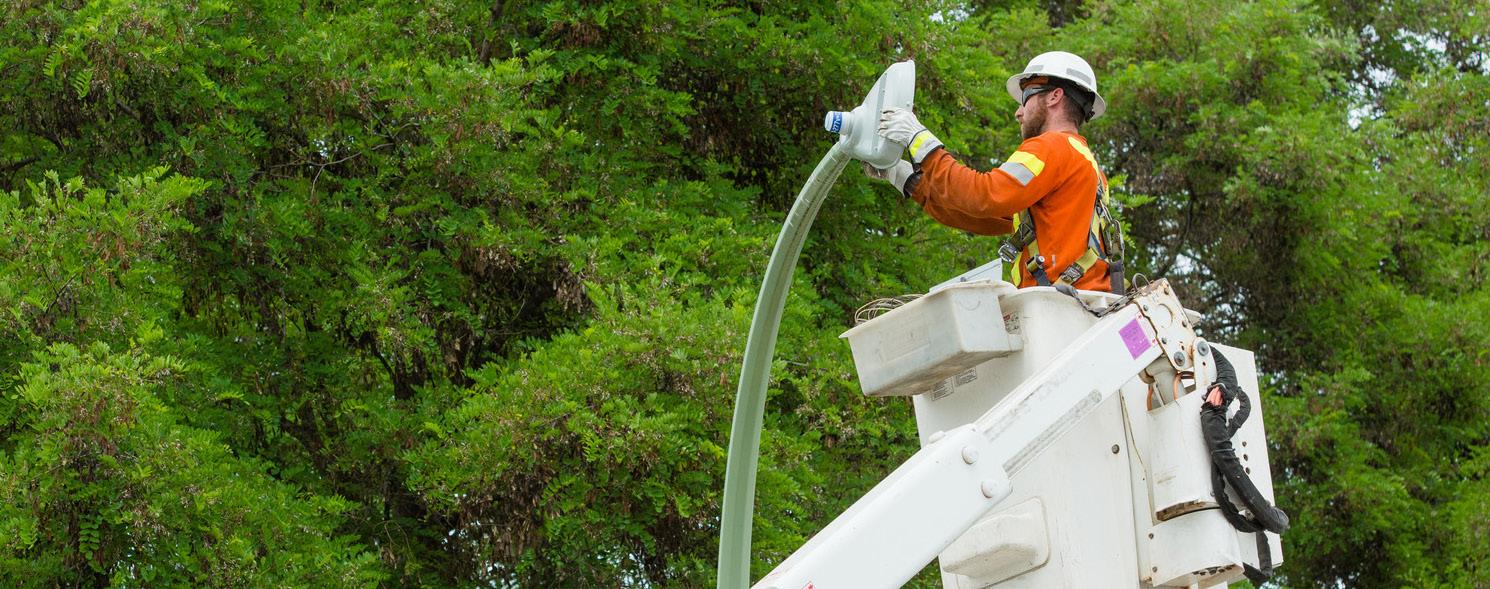
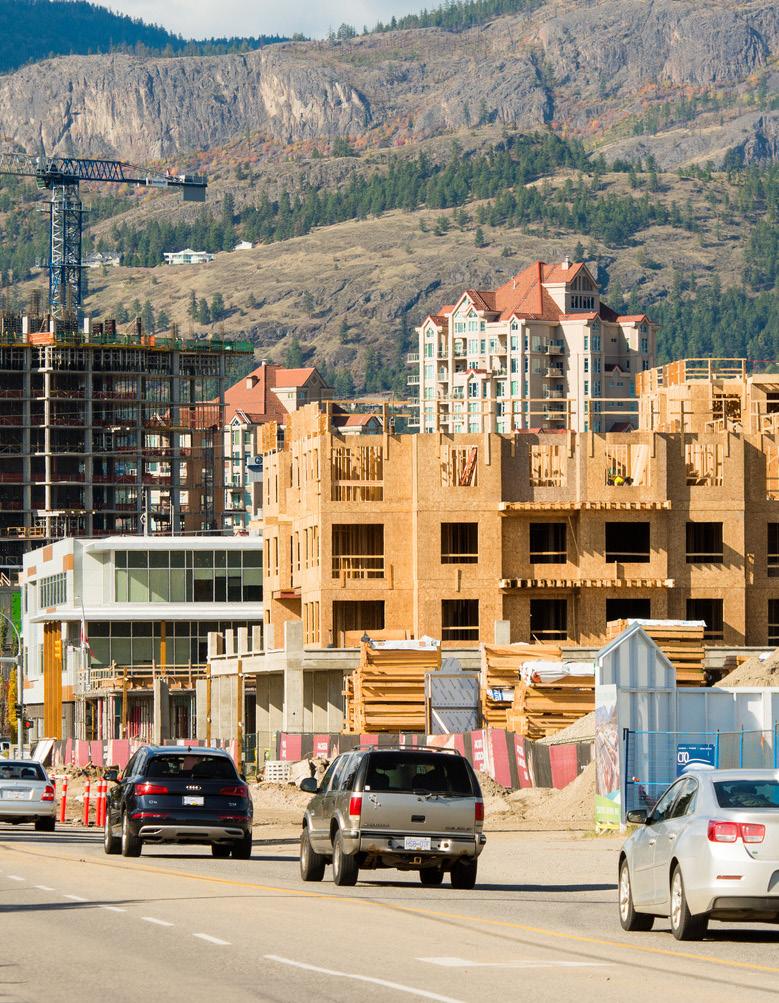
For the Year Ended December 31, 2019 (in thousands of dollars)
Long term debt – Water Fund
Trades, transport
Sales and service occupations
University certificate or degree
Apprenticeship or trades certificate or diploma
No certificate, diploma or degree
University certificate or diploma below the bachelor level
Management occupations
Social science, education, government service and religion
Health occupations
Natural and applied sciences
Art, culture, recreation and sport Processing, manufacturing and utilities
Natural resources, agriculture and related production
Note: Numbers and graphs on this page are updated from Census information available every 5 years. Except for the population graph which has the numbers updated each year from the figures available in kelowna.ca, ”About Kelowna.”
Note: the Regional District of the Central
includes City of West Kelowna, District of Peachland, District of Lake Country, and the Central Okanagan east and west electoral areas.